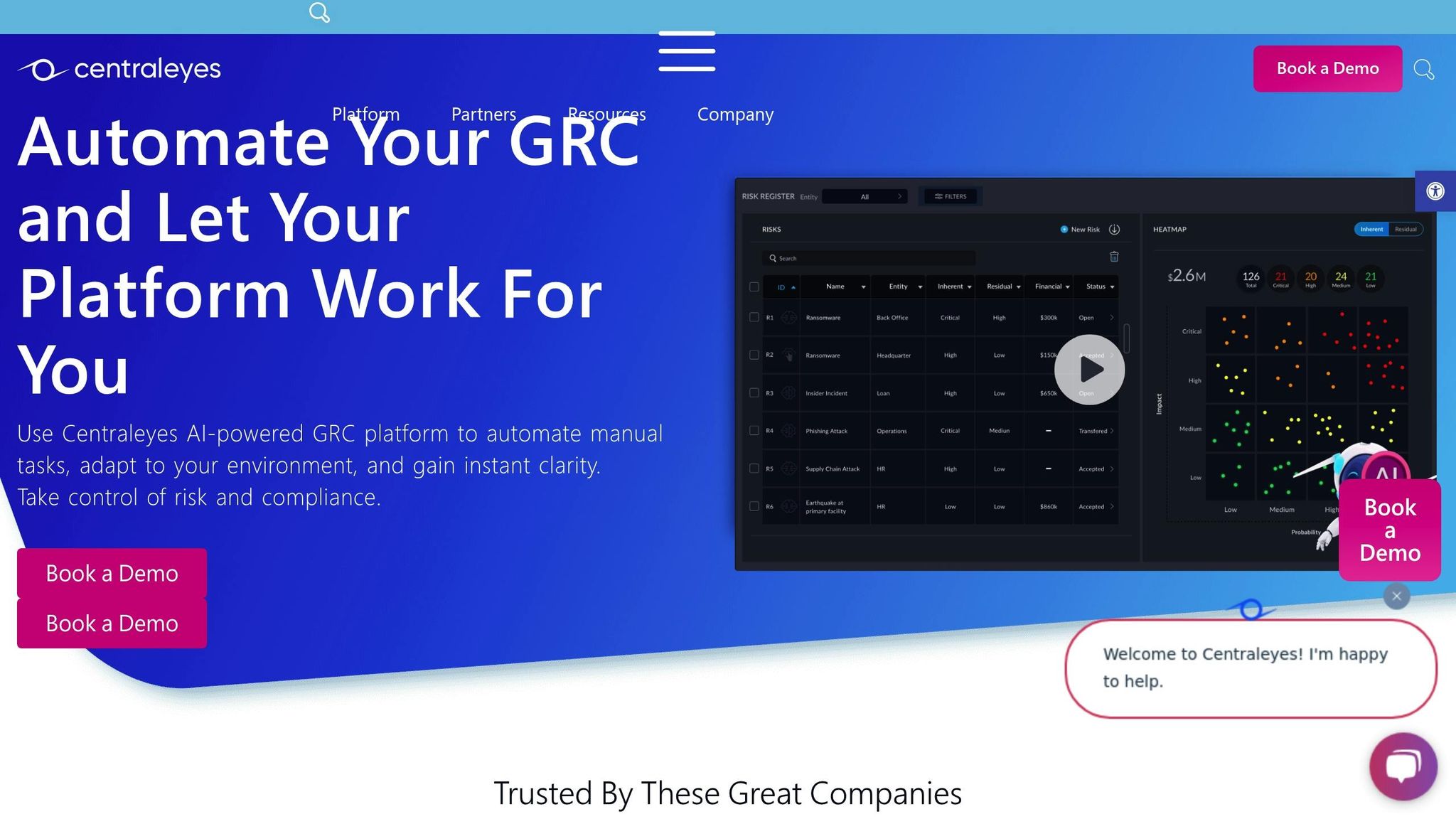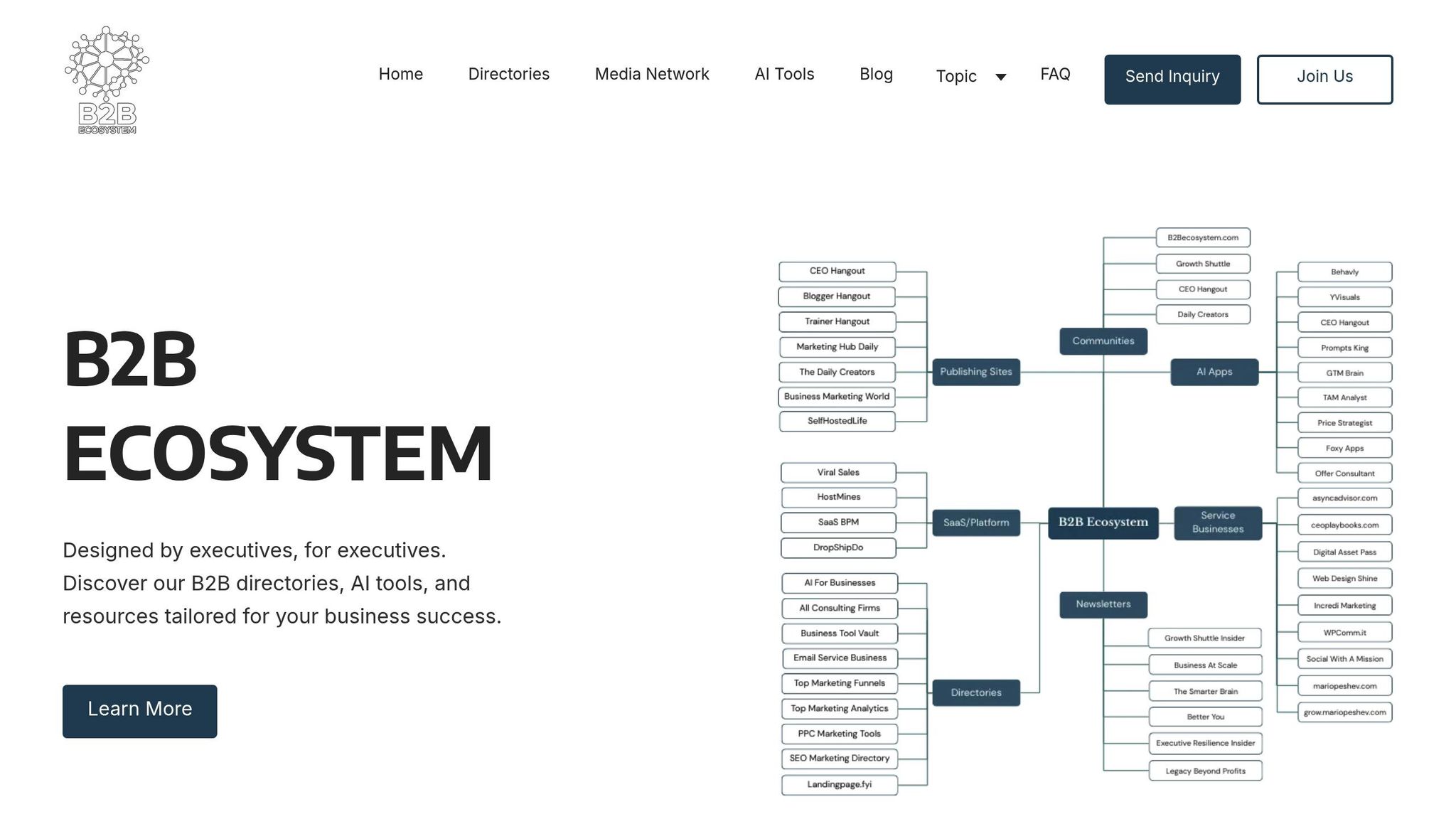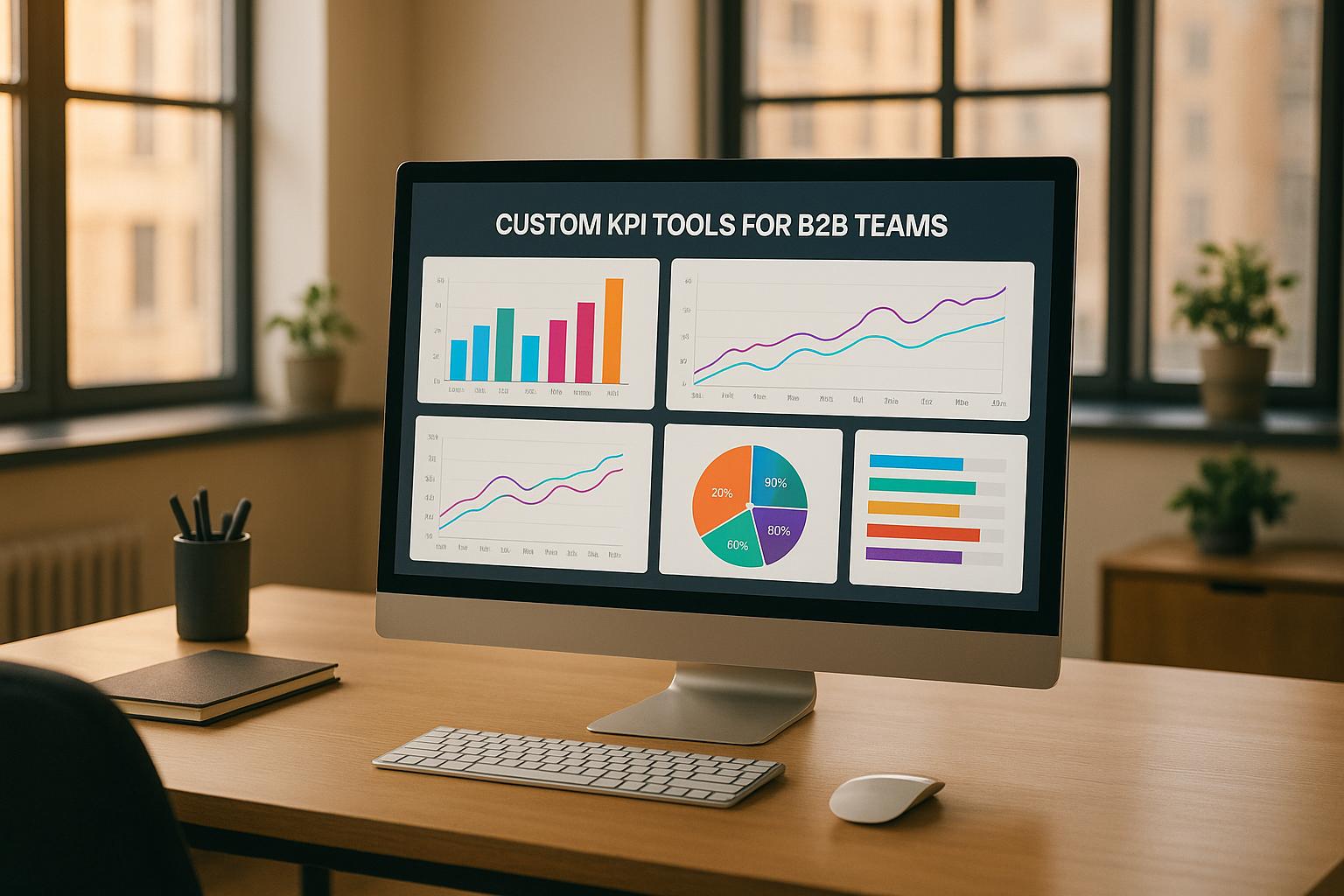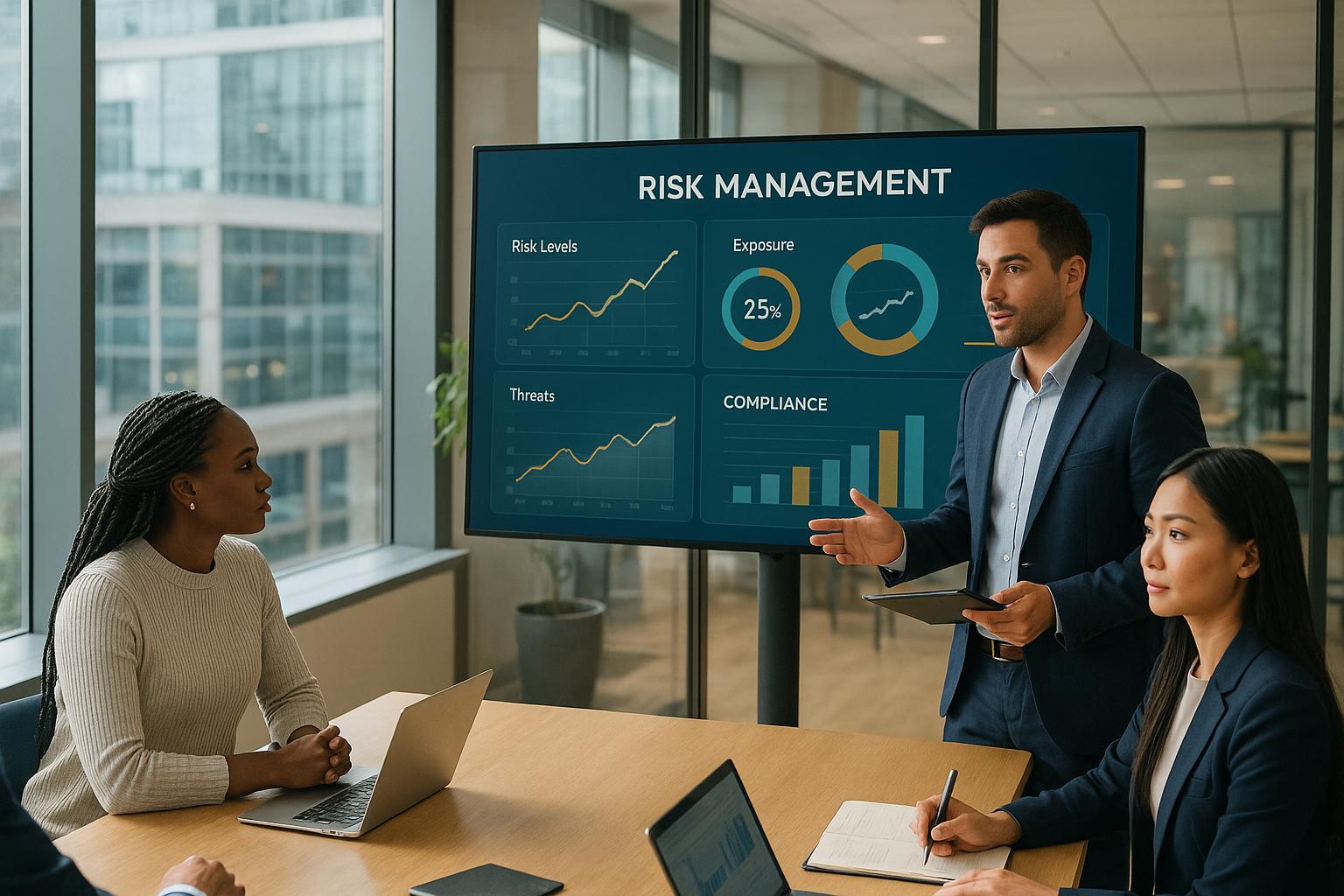Cybersecurity due diligence is a critical step when forming tech partnerships. It helps businesses evaluate a partner's security practices, identify risks, and ensure compliance with regulations. Neglecting this process can lead to financial losses, reputational damage, and regulatory fines.
Here’s what you need to know:
- Why it matters: Third-party risks account for 63% of data breaches. Due diligence protects your business from these vulnerabilities.
- Key goals: Identify risks, verify compliance, and establish trust with potential partners.
- How to assess risks: Review security controls, past incidents, data handling practices, and regulatory compliance.
- Continuous monitoring: Set up systems to detect threats and respond effectively to incidents.
Thorough due diligence ensures your partnerships are secure, compliant, and aligned with your business goals.
What is Cybersecurity Due Diligence? | Centraleyes

How to Assess Risk in Potential Tech Partners
Evaluating potential tech partners requires a structured approach to understand their security posture and identify vulnerabilities. By examining various risk factors, you can form a clearer picture of their strengths and weaknesses, laying the groundwork for more detailed reviews of their security measures and compliance with regulations.
Creating a Risk Profile
Building a risk profile starts with an asset inventory analysis to pinpoint critical resources and identify potential vulnerabilities from threats and weaknesses . This step ensures that your partner’s most important assets are adequately protected.
A cybersecurity risk assessment helps identify vulnerabilities, analyze the likelihood of security events, and evaluate their potential impact. When assessing a tech partner, consider factors like their company size, IT infrastructure complexity, and exposure to third-party risks.
Set clear goals for identifying vulnerabilities and determining the necessary security measures to address them. Define the scope of your evaluation to focus on the most relevant assets and systems. A thorough assessment should cover areas such as facilities, servers, networks, data security protocols, company policies, and third-party security practices. Engage your team early in the process and conduct a data audit to prioritize key assets.
Checking Past Security Incidents
Reviewing a partner’s history of security incidents provides insight into their ability to respond effectively. Analyzing past breaches can reveal the types of attacks they’ve faced, how they handled them, and the steps they’ve taken to prevent future issues. Look for patterns like recurring attack methods, delays in detection, or repeat incidents, which could indicate underlying vulnerabilities. Transparency about their security history often reflects a proactive and mature approach to cybersecurity.
Data Handling and Ownership Practices
Understanding how a potential partner manages data is crucial for assessing cybersecurity risks. Data ownership encompasses the legal rights and control over datasets, including access, modification, and distribution privileges .
"Data ownership refers to both the possession of and responsibility for information. Ownership implies power as well as control." - Loshin, 2002
Evaluate whether the partner has clear policies on data ownership, usage, and access. This includes reviewing their data governance framework and how they classify data into categories like sensitive, confidential, or public. Key areas to assess include access controls, data usage monitoring, and compliance with regulations such as GDPR and HIPAA.
The strength of a partner’s data security also hinges on their institutional policies. Weak or poorly documented policies can compromise data integrity . Check if they utilize Identity and Access Management (IAM) solutions and tools that provide visibility into data relationships for better oversight. Additionally, confirm that they have robust training programs for data handling and clearly defined protocols for data sharing at the start of your partnership.
Examining Security Controls and Policies
Using the risk profile you’ve already established, it’s time to take a closer look at your partner’s security infrastructure. The goal here is to evaluate whether their controls and governance are strong enough to safeguard your shared assets effectively.
Security Controls Checklist
Security controls are the backbone of any solid cybersecurity plan. They’re designed to reduce risks and limit the impact of security incidents. When assessing a tech partner, it’s helpful to break these controls into three main categories, each playing a critical role in creating a well-rounded defense.
- Administrative controls: These focus on policies, procedures, and guidelines that shape how people handle security. For example, does the partner have proper employee training programs? What about processes for approving access or responding to incidents? Review whether they’ve documented steps for onboarding employees, conducting background checks, and managing access permissions throughout an employee’s tenure.
- Technical controls: This category relies on technology to address vulnerabilities in hardware and software systems. Look into their firewall settings, intrusion detection tools, encryption methods (both for data at rest and in transit), and endpoint protection. Also, assess their use of automated monitoring, network segmentation, and vulnerability management practices.
- Physical controls: These measures protect tangible resources by preventing unauthorized access. Examples include secure server rooms, surveillance systems, building access controls, and workstation security protocols.
The most effective security strategies combine preventive, detective, and corrective controls across all layers of defense. Preventive controls aim to stop issues before they occur, detective controls help identify threats in real time, and corrective controls work to contain damage and restore normal operations. A strong partner should show how these layers interact rather than relying on individual, isolated measures.
For a truly resilient setup, these controls should overlap, creating a defense-in-depth strategy. This layered approach ensures that even if one security measure fails, others remain intact. Check whether your partner has implemented multiple layers of protection across their network, applications, and data storage systems.
Once you’ve reviewed the controls, the next step is to see how these measures are outlined in their formal security policies.
Security Policy Review
Security policies are the guiding framework for how an organization protects and manages its information. When evaluating a partner’s policies, focus on their high-level goals, key deliverables, and compliance standards rather than diving into overly technical details. Strong policies should be practical, clearly defined, and actionable, addressing the organization’s actual needs without unnecessary complexity.
Key areas to evaluate include policies on access control, incident response, and backup procedures. Each policy should outline who is responsible for implementing and enforcing it, especially during a security event.
Policies should also be simple and easy to understand. Overly complicated policies that restrict technology use without clear reasoning could signal weak governance. Look for policies that incorporate cybersecurity awareness training and assign accountability for different types of incidents.
Regular updates are crucial for keeping policies relevant. Partners should review their policies at least once a year and make additional updates after major events like a data breach, merger, or rapid growth. Ask about their process for revising policies and how they ensure employees stay informed about changes.
Once you’ve reviewed the policies, the next step is to determine whether the partner's technical infrastructure can support these policies as they grow.
Technical Infrastructure and Growth Capacity
While a partner’s current security setup is important, their ability to maintain and scale it over time matters even more. A solid IT infrastructure is key to ensuring that growth doesn’t come at the cost of security.
Evaluate whether their systems can handle increased workloads and user demands without compromising performance, reliability, or security. This includes examining load balancing, server capacity, and bandwidth management. A secure and scalable infrastructure is non-negotiable.
Redundancy and high availability are critical for reducing downtime and maintaining security during system failures. Take a close look at their backup systems, failover procedures, and disaster recovery plans. They should be able to maintain security monitoring and incident response even during outages.
Modern infrastructure often relies on virtualization and cloud computing to maximize efficiency. However, these technologies come with their own security challenges. Assess how your partner handles container security, cloud access controls, and monitoring for hybrid environments.
Automation is another factor to consider. Infrastructure that automates patch management, configuration, and backups can better support secure growth. Partners relying heavily on manual processes may struggle to keep up as their operations expand.
Their infrastructure should also be ready for emerging technologies. While they don’t need cutting-edge AI capabilities, their systems should be adaptable enough to incorporate new tools without requiring a complete overhaul.
Lastly, check their monitoring and optimization practices. Strong partners use robust logging systems, performance monitoring tools, and frequent infrastructure assessments. They should also demonstrate a commitment to continuous improvement, incorporating feedback and adopting new technologies to strengthen their security posture. A strong infrastructure ensures that their controls and policies remain effective, even as they grow.
Regulatory and Compliance Requirements
Once you've assessed the technical infrastructure, the next step is ensuring your potential partner meets all relevant regulatory standards. This involves a detailed review of their documentation and processes.
Checking Regulatory Compliance
Start by identifying the specific regulations your partner must follow. This depends on their industry, location, and the type of data they handle. For example:
- Healthcare Data: Ensure compliance with HIPAA standards, which include conducting risk assessments to identify vulnerabilities in electronic protected health information (e-PHI) and limiting employee access to sensitive data strictly to what's necessary.
- Payment Information: Partners managing payment card data must adhere to PCI DSS standards.
- Personal Data from EU Residents: GDPR compliance is mandatory, even if your partner operates outside the EU.
For organizations handling student records, confirm they have robust processes in place, such as role-based access controls, data encryption (both at rest and in transit), and regular security testing to prevent unauthorized access.
With organizations facing an average of 234 regulatory alerts daily, it's crucial to verify your partner’s ability to monitor and adapt to changing regulations. Ask about their methods for staying updated and how they adjust their security measures to remain compliant.
These steps not only ensure compliance but also lay the groundwork for a secure and trustworthy partnership.
Legal and Governance Track Record
A partner's legal and governance history speaks volumes about their reliability. It's essential to evaluate this aspect to avoid risks like reputational damage, financial instability, or legal complications.
Start by reviewing public records for any enforcement actions, fines, or warnings. Check if the partner has a dedicated compliance officer responsible for regulatory adherence.
"Compliance is not just about avoiding fines or penalties. It's about protecting your reputation, ensuring a safe workplace, and operating with integrity." - Ironclad Attorneys at Law
Look for evidence of regular internal audits and how quickly they address compliance gaps. With the average cost of regulatory fines hitting $34.4 million per incident in 2022 - an increase of 49% - this is a critical area to scrutinize. Also, review disclosures related to data breaches or regulatory violations. A history of incidents isn't necessarily disqualifying, but how the partner responded can reveal their commitment to improvement and compliance.
Finally, examine their risk documentation to ensure compliance and risk management are deeply embedded in their operations.
Risk Management Documentation
Risk documentation provides a detailed record of potential threats, enabling effective assessment and mitigation. When reviewing a partner’s risk management processes, focus on key elements like risk registers, analysis reports, mitigation plans, incident response strategies, and recent audit findings. Pay attention to recurring issues or control deficiencies.
Well-maintained compliance documentation - covering policies, procedures, and outcomes - should be part of an integrated risk management strategy. Companies with strong programs report 23% fewer financial losses from operational incidents, underlining the importance of robust documentation.
Partners with integrated compliance and risk management programs also reduce incident costs by 45%, making them more resilient and cost-effective. Look for evidence that they track and address identified risks through detailed remediation plans, timelines, and follow-up actions. This shows their dedication to continuous improvement.
Additionally, confirm that they maintain up-to-date compliance training records, including attendance logs, competency evaluations, and refresh schedules. These records highlight their commitment to keeping their team informed and prepared.
sbb-itb-01010c0
Continuous Monitoring and Risk Management
Cybersecurity efforts don’t stop once the ink dries on a partnership agreement. With the average data breach costing a staggering $4.45 million in 2023, staying vigilant is a necessity, not a luxury. Establishing strong monitoring and risk management systems ensures early detection of potential threats and a swift, effective response when issues arise.
Continuous Monitoring Methods
Continuous monitoring is all about spotting trouble before it escalates. As The Atlas Team puts it, “Cybersecurity monitoring means keeping a constant watch over your systems and network activity to spot anything that looks off, whether that is an unusual login, a data access spike, or something more subtle.”
Start by setting clear goals and outlining the scope of your monitoring efforts. Zero in on your most critical assets - think shared data repositories, integrated systems, or joint access points - where potential risks could have the greatest impact. Effective monitoring involves several key components: collecting data, detecting threats, generating alerts, triaging those alerts, and integrating incident response measures. Your system should actively scan network traffic and system activity, flagging security incidents in real time to limit potential damage.
When choosing monitoring tools, make sure they’re compatible with your partnership setup and capable of gathering data from essential sources. Fine-tune alerts and thresholds to minimize noise and focus on what truly matters. Regularly review system performance and adjust to address emerging threats. This ongoing effort creates a solid foundation for managing risks and responding swiftly to incidents.
Setting Up Risk Management Systems
Risk management isn’t a one-and-done task - it’s a continuous process. Throughout the lifecycle of a partnership, risks must be identified, assessed, and addressed. A well-structured risk management system helps avoid losses, supports informed decision-making, and balances growth opportunities with security concerns.
Your framework should include regular assessments, key risk indicators (KRIs), clear collaboration protocols, and mechanisms to adapt to changing circumstances. Align the framework with your organization’s goals and risk tolerance, and assign specific roles for monitoring risks across various partnership levels. Make risk monitoring part of daily operations and encourage team members to report potential issues. Using risk management software with real-time analytics, dashboards, and alerts can enhance visibility and streamline the process. A comprehensive approach should also focus on protecting critical data, patching vulnerabilities, monitoring endpoints, tracking user behavior changes, and overseeing third-party systems. These proactive measures improve your ability to identify threats quickly and respond effectively.
By taking this approach, you’ll be better equipped to handle incidents when they arise, minimizing disruptions and maintaining control.
Incident Response and Business Continuity
Even the best monitoring and risk management systems need a robust incident response plan to back them up. When a threat is detected, the ability to respond promptly is crucial. An incident response plan outlines how to detect, address, and recover from cybersecurity incidents.
A solid plan includes several elements: defining its scope, forming a Computer Security Incident Response Team (CSIRT), creating a risk matrix and response workflows, and establishing communication protocols, training, and metrics. The process should cover preparation, detection and analysis, containment, eradication, recovery, and post-incident review.
Recent events like the MOVEit data breach in May 2023, which exposed millions of records, and the MGM Resorts cyberattack in September 2023, which disrupted operations, highlight the need for comprehensive response strategies. Regularly updating the plan to reflect new threats and conducting simulations ensure readiness. Annual reviews or updates following major partnership changes help keep the plan relevant and effective .
"As more of our physical world is connected to and controlled by the virtual world, and more of our business and personal information goes digital, the risks become increasingly daunting. While it has never been more important to manage cybersecurity risk, it also has never been more difficult." - Dave Hatter, Cybersecurity Consultant at Intrust IT
In partnership scenarios, where multiple organizations must coordinate their efforts, preparation is everything. Strong incident response planning ensures that when the unexpected happens, everyone knows their role and can act quickly to minimize the fallout.
Using The B2B Ecosystem Tools for Cybersecurity Due Diligence

The B2B Ecosystem tools enhance your cybersecurity due diligence by combining advanced technology with expert insights. These tools streamline the evaluation process, making it easier to assess potential partners and maintain compliance with industry standards.
B2B Directories and AI Tools
The B2B Ecosystem's directories provide a solid starting point for researching potential partners. They offer detailed insights into a company's background, expertise, and reputation within the industry.
One standout feature is the Risk Analyzer tool, an AI-powered solution that automates risk scoring by analyzing financial and market data. This tool helps identify potential red flags early, reducing the need for time-consuming manual research and improving the overall evaluation process.
Another valuable resource is the AI Process Optimizer, which keeps cybersecurity evaluations up-to-date. These AI tools excel at processing large datasets and spotting patterns that might escape human analysts. For example, they can generate insights from search trends, analyze competitor strategies to pinpoint opportunities, and uncover relevant statistics to support your findings.
By handling the initial stages of research, these tools free up time for more in-depth analysis and expert consultation when necessary.
Consulting Services for Expert Support
For more complex cybersecurity challenges, the B2B Ecosystem offers consulting services designed to provide expert guidance. These consultants work closely with your team to create customized cybersecurity solutions that align with your organization's goals, workflows, and compliance requirements. This tailored approach ensures that your due diligence processes meet industry-specific needs and risk management goals.
Statistics underline the importance of expert support: 43% of cyberattacks target small businesses, and in 2021, the average cost of a data breach for companies with fewer than 500 employees was $2.98 million. Consultants can conduct thorough audits to identify vulnerabilities, enhance security measures, and build trust with both partners and clients.
Compliance and Process Improvement
In addition to AI tools and consulting services, the B2B Ecosystem offers resources to streamline compliance and improve cybersecurity processes. Staying compliant with regulations, such as the EU's NIS2 Directive, is critical for maintaining secure partnerships. The platform provides tools and guidance to help organizations align with standards like ISO/IEC 27001 and NIST SP 800-53.
For example, the platform supports Customer Identity and Access Management (CIAM) assessments, which help identify system vulnerabilities and recommend compliance improvements. These assessments are crucial for refining security strategies and ensuring regulatory alignment.
Process improvement tools also play a key role by optimizing compliance documentation, ensuring accuracy, and suggesting ways to improve efficiency. By automating these tasks, security teams can focus on strategic priorities like threat analysis and partnership development.
With its combination of advanced tools, expert consulting, and compliance resources, the B2B Ecosystem equips organizations to stay ahead of evolving cybersecurity challenges while building secure and compliant partnerships.
Key Points and Next Steps
Bringing together the insights from earlier assessments, these final steps aim to transform your cybersecurity due diligence into practical strategies. Effective due diligence not only identifies risks but also helps address them systematically, improving your organization’s overall security readiness.
Summary of the Due Diligence Process
Cybersecurity due diligence involves eight core steps: identifying risks, reviewing policies and controls, conducting technical evaluations, assessing third-party vendors, checking employee awareness, ensuring regulatory compliance, analyzing incident histories, and performing penetration tests.
Leading investment firms have adopted streamlined frameworks to cut evaluation time while gaining deeper insights into potential deals.
To prepare effectively, gather documentation such as code repositories, system diagrams, and audit reports. Automated tools can simplify the collection of critical system data. Involve key stakeholders - like tech leads, developers, business analysts, legal advisors, and project managers - early in the process to cover all bases. Performance testing ensures systems can handle future demands, while security audits highlight vulnerabilities and prioritize fixes.
This structured approach not only identifies security gaps but also sets the stage for long-term planning and improvement.
Advantages of Early Cybersecurity Planning
Planning ahead minimizes risks and keeps operations running smoothly, even during tough times. For instance, breaches can cost an average of $4.88 million, but early planning can help avoid such expenses and secure valuable contracts by showcasing robust cybersecurity measures. With 43% of cyberattacks targeting small and medium-sized businesses, proactive planning is vital for organizations of all sizes.
Smaller businesses, in particular, can use strong cybersecurity practices to compete for contracts with larger enterprises or government agencies that require compliance. Highlighting your cybersecurity program to clients and partners builds trust and demonstrates resilience. Sharing compliance certifications further strengthens this trust.
Matt Gorham of PwC’s Cyber & Risk Innovation Institute underscores the strategic importance of early planning:
"The CISOs I see that are most effective can translate that technical cyber-risk into business risk language, engage with the C-suite, engage with the board. Those that do that are much more successful than their peers, both in terms of the scope of the value they bring to the organization but also getting the resources they need."
By starting early, organizations can position themselves to leverage specialized tools and resources that enhance their cybersecurity defenses.
Leveraging Available Resources
A variety of resources are available to support businesses in improving their cybersecurity efforts. These build on the technical evaluations and risk management frameworks discussed earlier, offering valuable tools and guidance.
Specialized tools can simplify due diligence. Cyber Risk Quantification (CRQ) frameworks help businesses measure cyber risks and allocate resources effectively. Governance, Risk, and Compliance (GRC) platforms streamline vendor assessments and evaluate potential acquisitions, reducing manual effort and improving accuracy.
Government agencies also offer essential support. For example, NIST and CISA provide small businesses with tools and best practices for implementing cybersecurity programs. The Global Cybersecurity Alliance (GCA) offers free resources to reduce cyber risks, while the FBI’s Internet Crime Complaint Center (IC3) shares updates on emerging cyber threats.
For smaller organizations lacking internal expertise, Managed Security Service Providers (MSSPs) offer enterprise-level security solutions without requiring significant investments in technology or personnel.
Google Cloud highlights the benefits of its cybersecurity due diligence services:
"With Mandiant Cyber Security Due Diligence Service, our experts analyze multiple cyber environments and business risk profiles to improve security program capabilities and provide actionable remediation recommendations to ensure combined security health and overall maturity alignment."
Anthony Dagostino of Avoca Risk LLC emphasizes the importance of staying vigilant:
"Ensuring your portfolio is resilient in the face of a wide range of evolving attacks is a critical, ongoing process."
Regular audits help uncover vulnerabilities, while continuous monitoring ensures your security measures keep pace with new threats and evolving business needs.
FAQs
What are the essential steps for performing cybersecurity due diligence when evaluating tech partners?
To carry out a comprehensive cybersecurity due diligence process, begin by pinpointing any potential risks in your tech partner's cybersecurity practices. Look for weaknesses in their systems or gaps in their compliance efforts that could expose your business to threats. Pay close attention to how they handle sensitive assets, such as proprietary data or intellectual property, and evaluate their technical infrastructure, software, and data management practices.
Take it a step further by reviewing their security controls. Check for third-party audits and certifications that demonstrate adherence to industry standards. A risk assessment is also crucial - it helps you gauge their legal and operational position while ensuring they have strategies in place to address evolving threats. Finally, don’t treat this as a one-and-done task. Regularly update your assessments to keep pace with the ever-changing cybersecurity landscape and emerging best practices.
How does continuous monitoring improve the security of technology partnerships, and what are the best practices?
Continuous monitoring plays a crucial role in fortifying the security of technology partnerships. By spotting potential threats early, evaluating risks as they arise, and addressing vulnerabilities swiftly, it ensures partnerships remain resilient and trustworthy.
Some effective practices include leveraging automated tools like Security Information and Event Management (SIEM) systems, performing regular vulnerability scans, and incorporating real-time threat intelligence. These strategies offer continuous oversight, help meet compliance requirements, and enable quick responses to new risks - keeping partnerships secure and stable.
Why are regulatory compliance and legal governance important when assessing a tech partner?
Regulatory compliance and legal governance play a crucial role in evaluating the reliability of a tech partner. These factors ensure that the partner adheres to relevant laws and industry standards, helping to avoid potential legal troubles or costly penalties.
When a partner prioritizes compliance, it signals ethical practices, safeguards for sensitive data, and a proactive approach to minimizing risks that could harm your business’s reputation or stability. This sets the stage for a dependable and lasting partnership.


